
* Alistar Illustration
Children's Illustrator
How and why did you decide to pursue illustration as your career?
Ever since I was a little girl, drawing came naturally to me—it was like a second language. Everyone around me just sort of knew that this was what I was meant to do, and honestly, so did I.
But even more than drawing, it was color that truly captivated me. I didn’t need to study color theory to understand it; it was something I instinctively felt. It was my superpower.
Later, when I studied at the School of Art, I found the formal rules of color a bit bewildering—they seemed to complicate what I already understood on a gut level. I wasn’t trying to follow formulas; I just wanted the freedom to explore, to play, and to express what I intuitively knew.
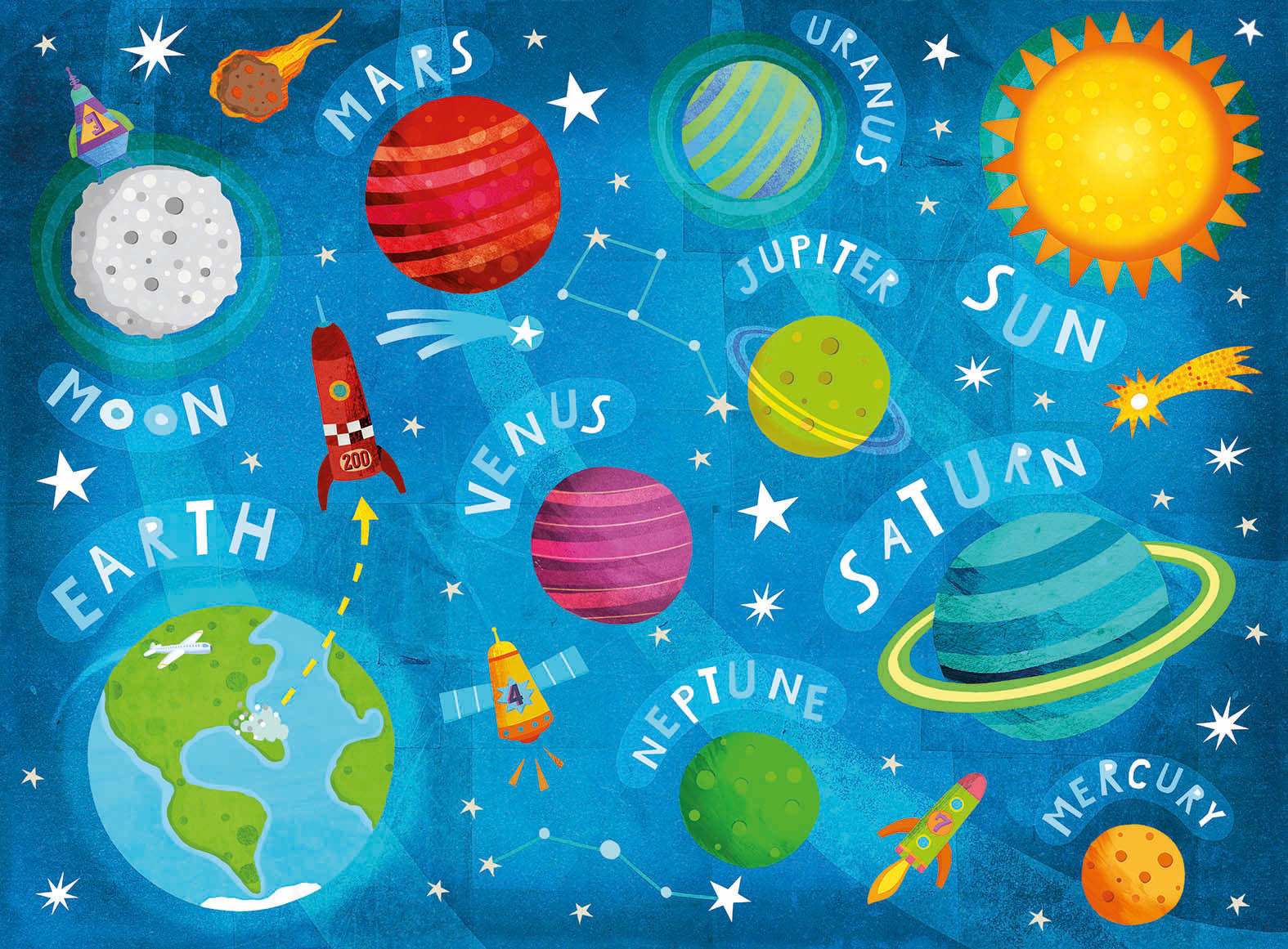
Solar System, Floor Puzzle Crocodile Creek, USA
Did you attend art school or undertake any other formal artistic training?
Absolutely! There was never any doubt—I was destined for art school. And not just any art school—it felt like stepping straight into a fairy tale.
I studied Art in the enchanting Renaissance city of Urbino, nestled among the rolling green hills of central Italy. Our school was housed within the majestic Palazzo Ducale, a 16th-century palace that once stood alongside Florence as a cultural powerhouse. It was home to artists, poets, musicians, thinkers—and of course, the birthplace of the great painter Raphael.
But this wasn’t your typical school. Walking through those doors each morning felt like traveling back in time. You could almost hear the echoes of creativity in the halls—the lingering presence of the masters who came before us. The place was alive with inspiration.
There, I focused on Animation and Photography, surrounded by history, beauty, and the kind of magic only art can bring.
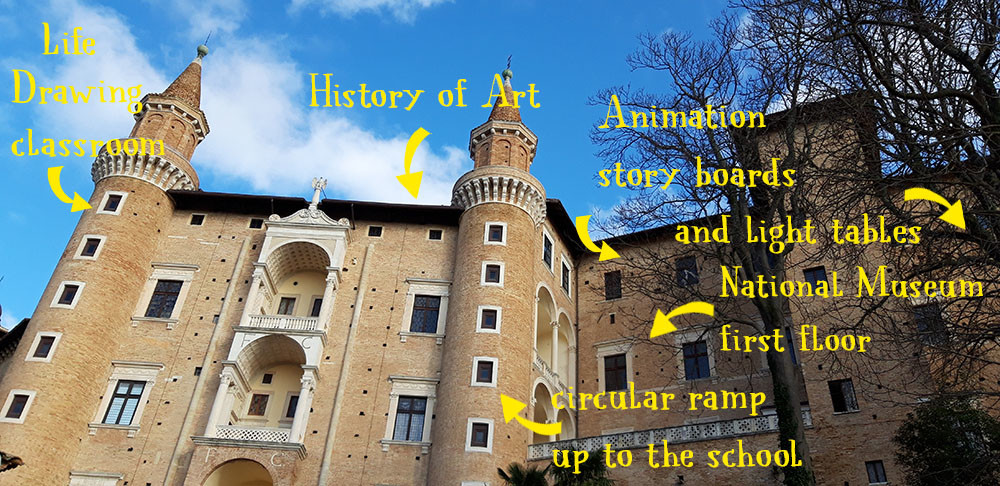
Palazzo Ducale of Urbino, Marche Italy

Do you have a favourite picture book or recall one of the first picture books you saw?
Alice in Wonderland!
That magical world of nonsense, color, and delightful oddities has always had a special place in my heart.
And then there were those marvelous antique illustrated books—full of mystery, charm, and intricate detail. I could get lost in them for hours. They sparked my imagination and shaped the way I see storytelling and visual expression today.
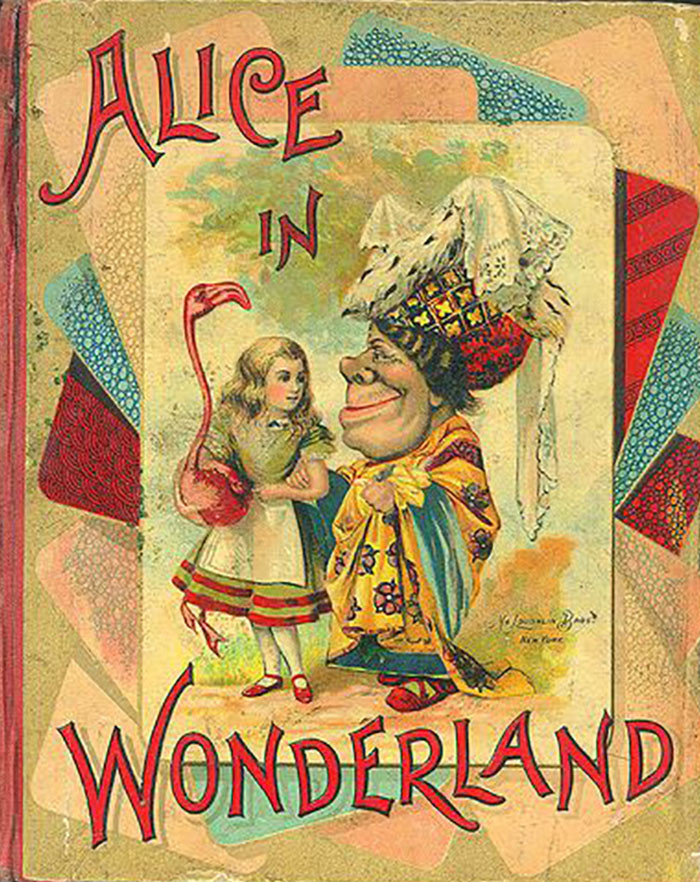


What was your first commission as a professional illustrator?
When I started studying Animation and Cinema and Photography at the School of Art, I was not supposed to be an illustrator, my passion was pictures in motion, cinema, light and photography, I grew up in a family of photographers, my great grandfather was a photographer at the end of 1800,and then my grandfather and all his family members and everywhere I looked was photography , I always had images in mind, and I felt coloring with light was in my DNA.
Illustration came my way after I had a long previous career in animation.
My 25 years of career as an illustrator just happened by chance, after working as an animator for years, first I worked and published in Italy, then working with companies worldwide: books, magazines, toys, covers, apps, games and more..
I’ve started working as an animator before illustrating, and the first paid work was in the animations studios in Milan where I’ ve worked for motion pictures and tv, but I don’t really remember what was the subject, it’s been a long time ago.
One of the first illustrated book was a short story of Gianni Rodari,for Emme Edizioni , Trieste.
Gianni Rodari is one of the most loved children’s writer in Italy .
Was a lovely lively story about a weird little boy called Giovannino , ‘the walk of an absent minded ‘, it’s been a success and the illustrations participated to many exhibition around the world, that book opened a large way to me in the world of illustration.
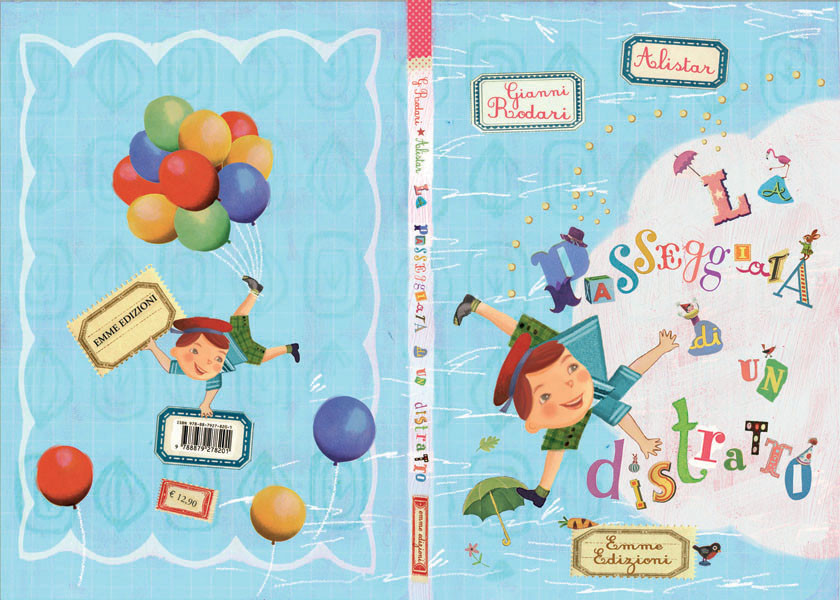
La passeggiata di un distratto, author Gianni Rodari, illustrated book Emme Edizioni,Italy



What is your favourite medium to work with and why?
I started with colors, pencils, brushes—all the classic tools—back when computers weren’t even part of the picture. That was simply how you drew; there was no alternative.
But then the digital world arrived, and I was instantly fascinated—even with the very first, clunky painting software of the early Computer Age. There was something magical about it. I quickly realized that this new “hardware” was opening up a whole new universe of creative possibilities.
From that moment on, I traded traditional tools for a digital palette. No more oils, no more watercolors—my computer had everything I needed, and more.
Well, almost everything. I still keep one traditional tool close by: a blue pencil. It’s the same kind I used for sketching animation frames, and I still love using it for rough drawings on paper. Some habits are just too good to give up.
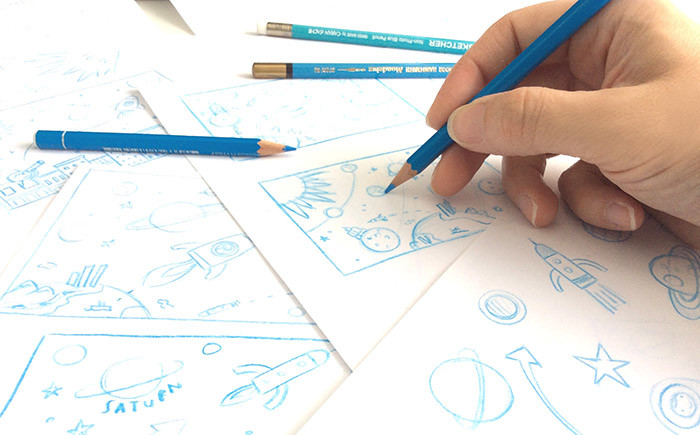
my hand and my beloved blue pencil

my hand and my Cintiq working on the Atlas Maps !
Which project has been most instrumental in developing your personal style?
The projects I’ve worked on for years with Crocodile Creek in the U.S. have been such a joy!
They gave me the freedom to fully embrace my own style—lively, colorful, playful—and they truly trusted me. They loved what I created, and I loved working with them!
It’s been a wonderfully successful collaboration over the years.
Designing toys and games with them made something click for me—I realized it was the natural next chapter in the evolution of my work.

Alistar Illustration creative products for Crocodile Creek, USA

Talk us through the process of creating one of your latest illustrations or books.
I still prefer sketching on paper rather than on a screen. There’s something about the feel of pencil on paper that gives me more control—I can turn the page, tilt it, flip it around—whatever the drawing needs.
Truth be told, sketching isn’t my favorite part of the process—I’m much more in love with color! But I do enjoy sketching during the early, creative phase of a project, when everything is still forming.
I usually draw with a blue pencil—the same kind I used back in my animation days. It keeps my hands and paper cleaner than graphite, and let’s be honest, I just love the color blue.
I start with loose, rough sketches, letting the characters and the story slowly emerge. Once they begin to take shape, I share them with the client. From there, we go back and forth—refining, adjusting—until everything feels just right.
Then comes my favorite part: coloring on the computer. That’s where I feel completely free. I love experimenting with different styles and moods, tailoring the final look to each unique project.

Space, First Stickers Book Usborne Publishing, UK

Solar System floor puzzle Crocodile Creek, USA

The tortoise and the Hare Educational Insights, USA
Take us behind the scenes and describe your studio / workspace.
I’ve never really had a permanent address, so my studio has always traveled with me.
It’s like a trusty travel companion—light, flexible, and always ready to be packed up and moved to the next adventure.
Over the years, I’ve worked from many different places. Most recently, my studio life has been split between the sunny Adriatic Riviera, the historic charm of Genoa, and the creative buzz of Berlin.





Who or what have been some of your major artistic influences?
For as long as I can remember, it’s always been about the light.
As a child, I could spend hours mesmerized by sunlight streaming through a window—watching tiny dust particles dance in the air, tracing the reflections as they moved across the walls. Light wasn’t just something I saw—it was something I felt deeply. It became my first teacher.
When I began studying Art, I found myself drawn to artists who also had an intimate relationship with light and color. Two of my early influences were Lorenzo Mattotti and Edward Hopper—both masters in using light not just as an element, but as a storyteller.
And then there’s Mary Blair—the brilliant Disney concept artist from the 1940s. I absolutely adore her. Her playful use of color, bold shapes, and luminous energy have always been a huge inspiration to me.

Edward Hopper

Lorenzo Mattotti

Mary Blair
Do you have a favourite soundtrack you listen to when you’re working?
In the past, before podcasts became a thing, I would listen to tons of music while working—it was my main source of inspiration. These days, I love tuning into people’s voices instead. Podcasts let me hear different perspectives and stories, and that inspires me in a whole new way while I’m at my desk.

What’s the best piece of advice anyone has ever given you?
Magic is something you make… is written over my desk
Whatever you can do or dream you can, begin it. Boldness has genius, power and magic in it.
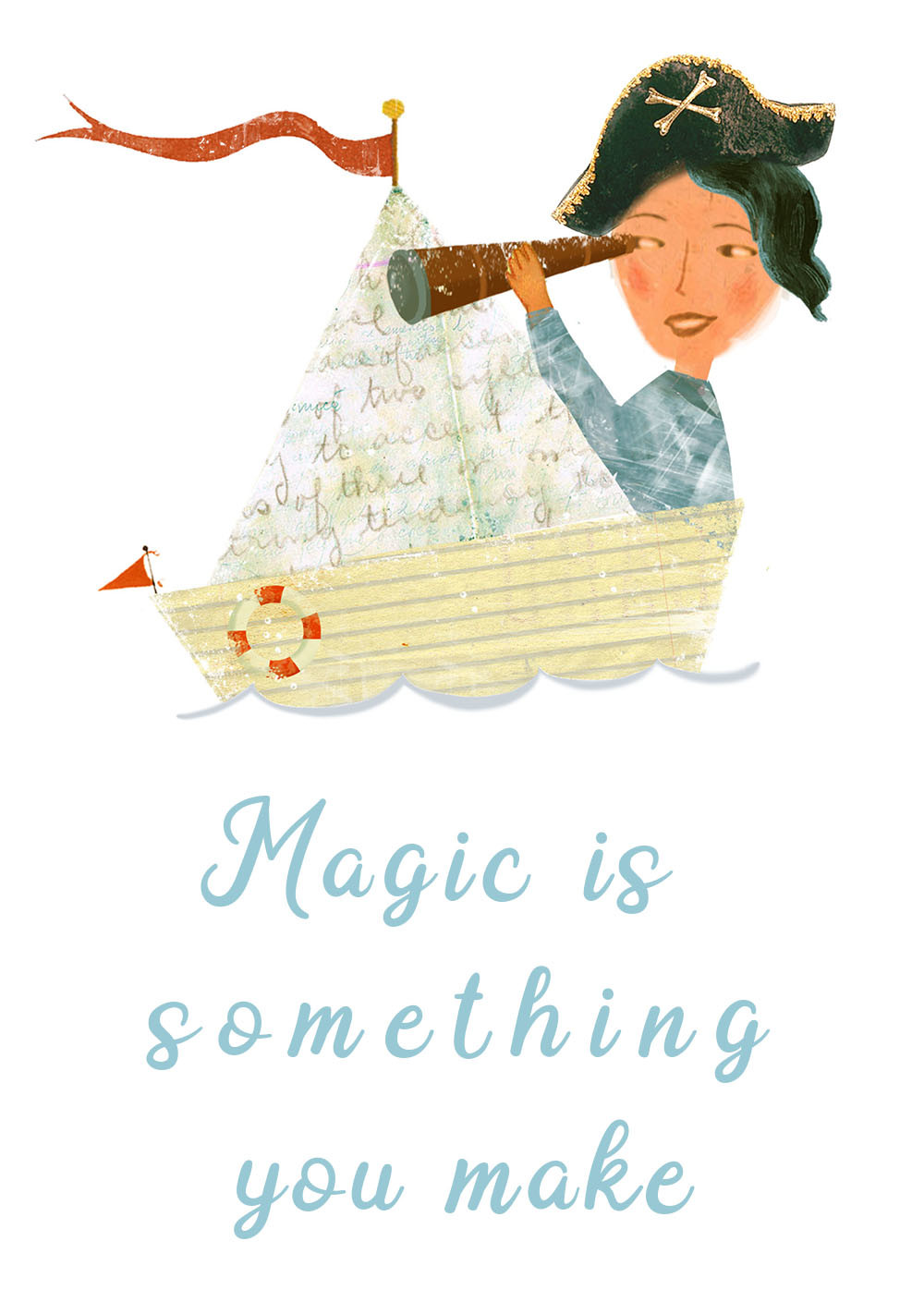
How many times do you tend to draw a character until you are happy with it?
It’s a creation—a new little being coming to life.
It takes time, patience, and a bit of quiet listening. You have to feel it, give it space, and slowly, gently, it begins to reveal itself. And when it does, there’s this wonderful moment where we both feel it: a quiet joy, like we’ve arrived together.
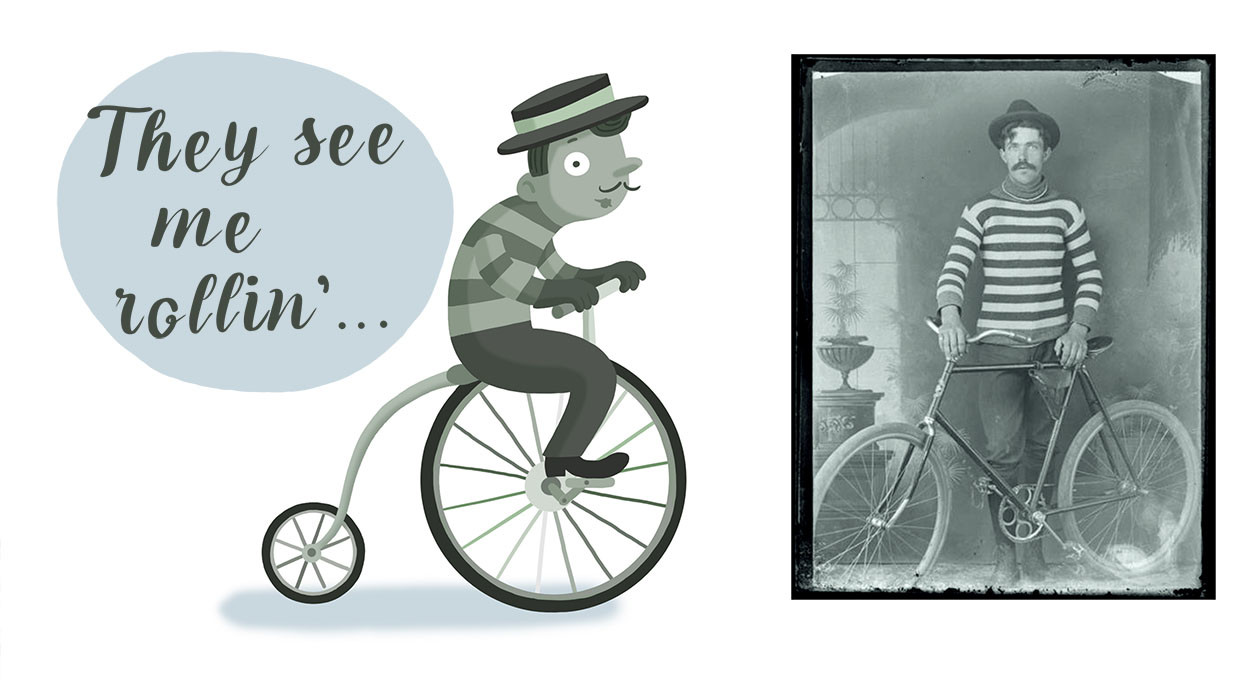
Outline your dream project.
An interactive 3D globe—no question about it, that’s right up my alley! Maps and globes have always felt like my natural playground.
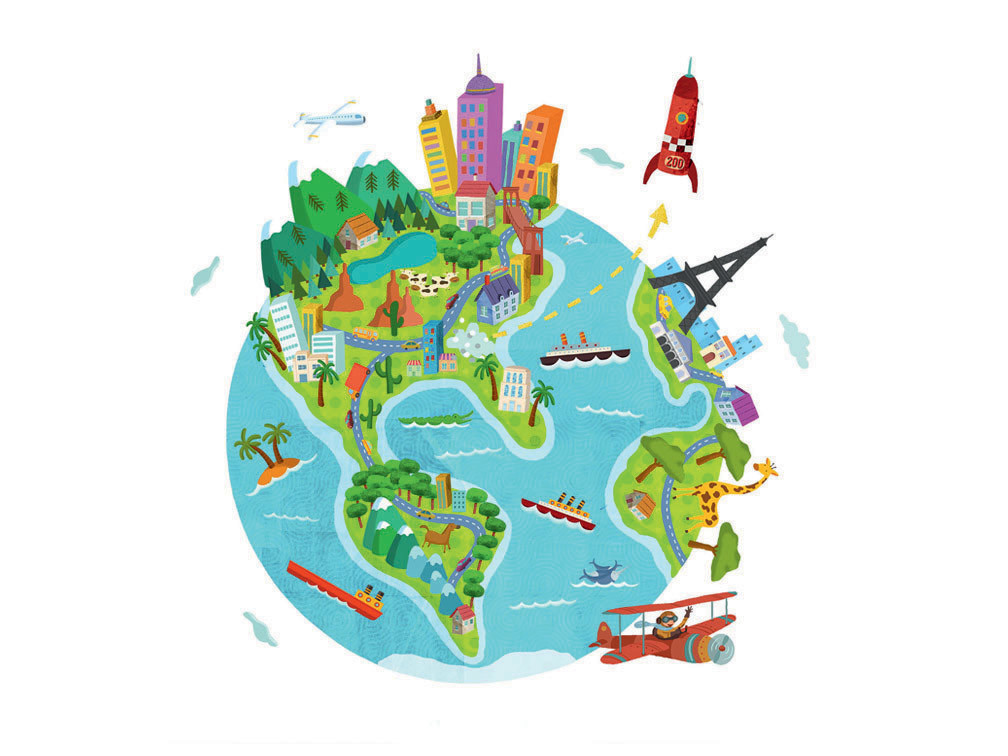
Globe, floor puzzle Crocodile Creek, USA

Asia Map. Crocodile Creek, USA

World cities, map game Crocodile Creek, USA

Who or what made you want to become an illustrator?
From as far back as I can remember, I was absolutely fascinated by the world of visuals. Colors spoke to me like a secret language, and toys weren’t just playthings—they were tiny worlds bursting with stories waiting to be told.
That mix of imagination, vibrant hues, and playful shapes pulled me in and never let go. Becoming an illustrator felt like the perfect way to bring all those loves to life every day.
